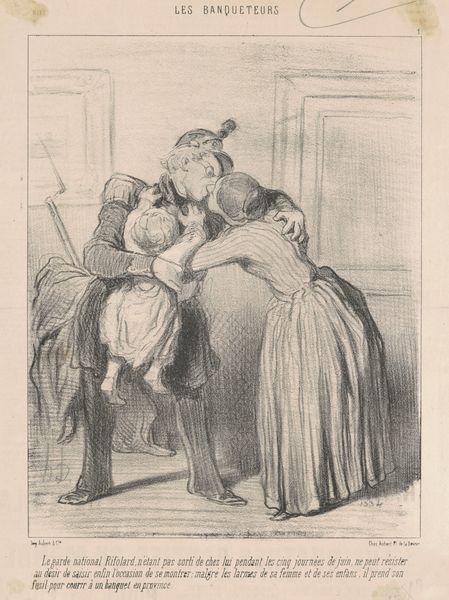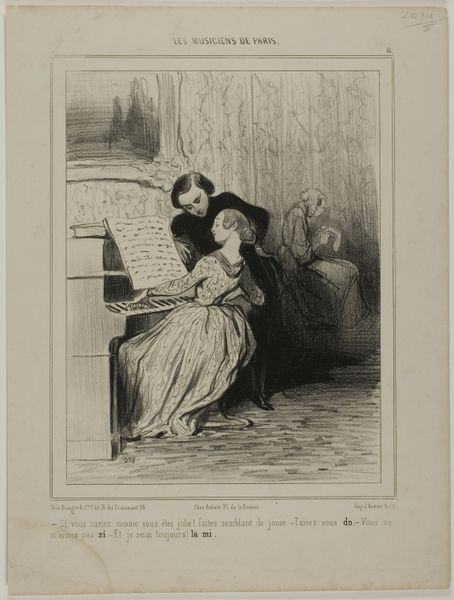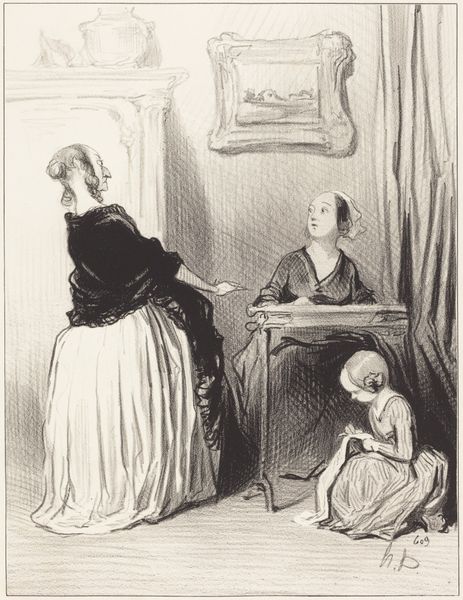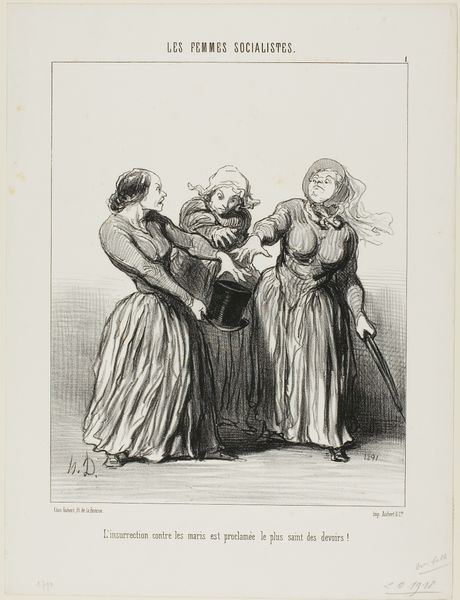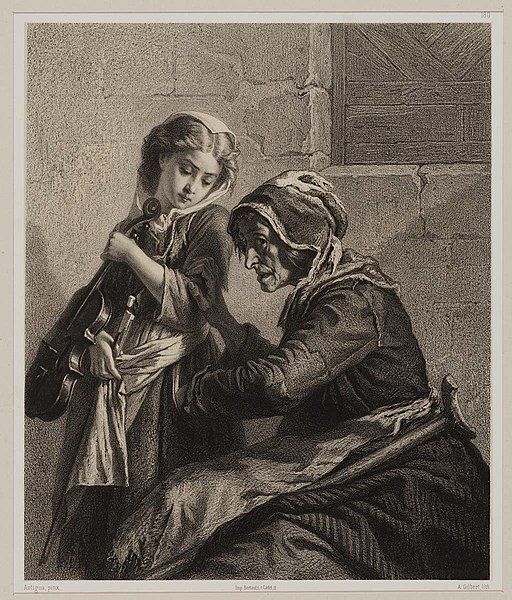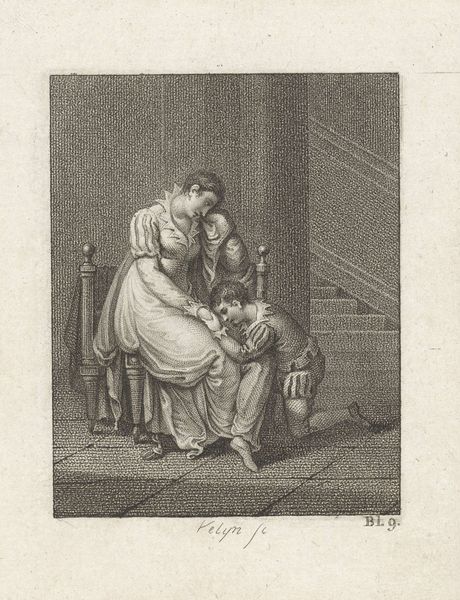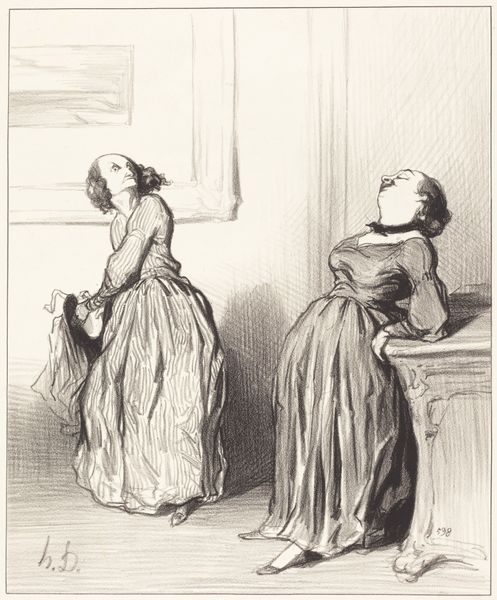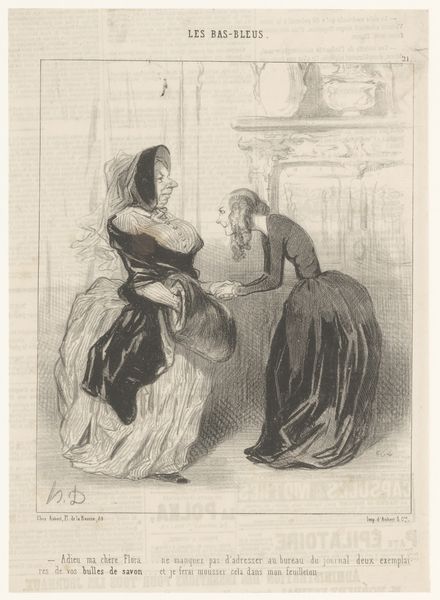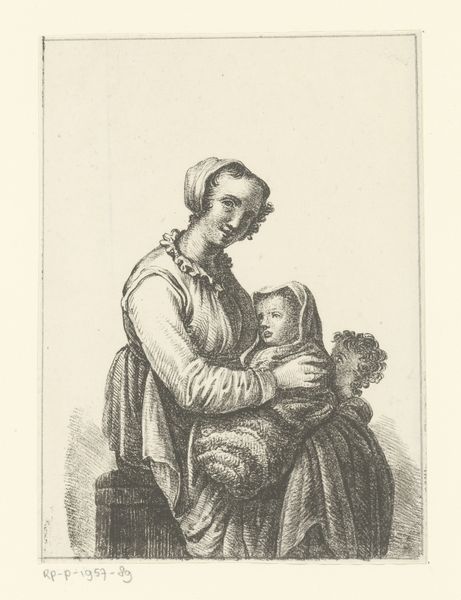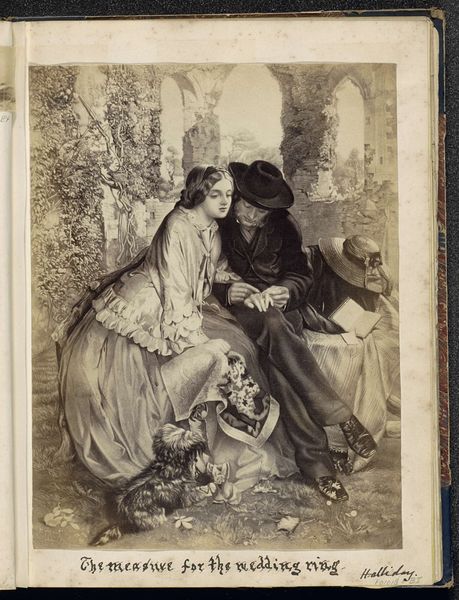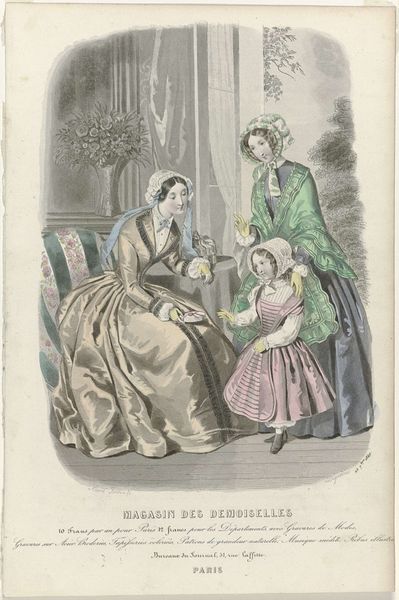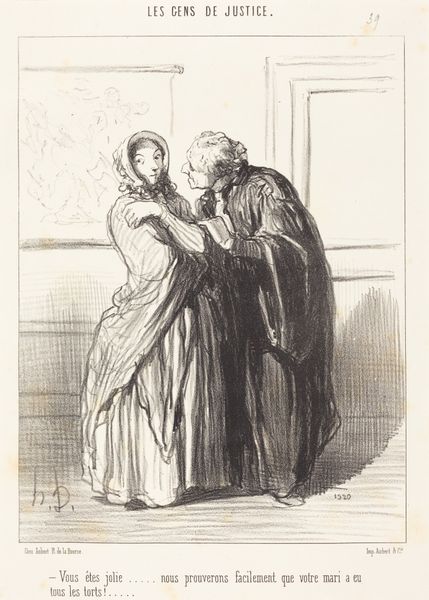
drawing, lithograph, print, paper, ink, pencil
#
portrait
#
pencil drawn
#
drawing
#
lithograph
# print
#
pencil sketch
#
paper
#
ink
#
pencil drawing
#
romanticism
#
pen-ink sketch
#
pencil
#
genre-painting
Dimensions: 177 × 150 mm
Copyright: Public Domain
Curator: This is Jean-François Millet's lithograph, "Where Can He Be?", created around 1848. Editor: It has a very poignant and anxious feeling, doesn't it? You immediately sense this melancholic tension from the mother and her children. There’s this void between domestic comfort and the uncertainty of what lies beyond. Curator: Absolutely. And it's the power of a few skillfully placed lines and tonal shifts that create this narrative. Notice how Millet uses shadow to emphasize the mother's pensive posture and the children clinging to her. It suggests vulnerability. The image reminds me of countless depictions of waiting – Penelope awaiting Odysseus, for instance. There is an entire visual and cultural heritage of the devoted mother at the origin of Western civilization. Editor: True, the artistic technique intensifies the underlying sense of unease. Given the year, it could definitely reflect the political instability in France, which makes this image socially very relevant. This woman embodies the emotional cost faced by many, which extends to us. Is it simply waiting? Or a struggle? Curator: A potent suggestion. Her searching gaze is a powerful element in the overall symbolic structure, hinting at more than mere waiting. She's looking toward an indefinite and obscured future. There’s a profound visual absence embodied here, inviting the viewer to contemplate absence, perhaps even death. Editor: It also challenges Romantic tropes; Millet is positioning this familial scene not in some sublime wilderness, but an uncertain space. The unseen person they’re waiting for underscores what’s happening in broader society. It acknowledges that individual experience is not separable from larger cultural events. It almost invites resistance. Curator: I see that reading very strongly, and the brilliance of the lithograph lies in its suggestive and indefinite visual space. One reads the historical through intimate visual worlds. Editor: It's images like this that prompt us to reflect on the role of visual representation during periods of uncertainty.
Comments
No comments
Be the first to comment and join the conversation on the ultimate creative platform.
